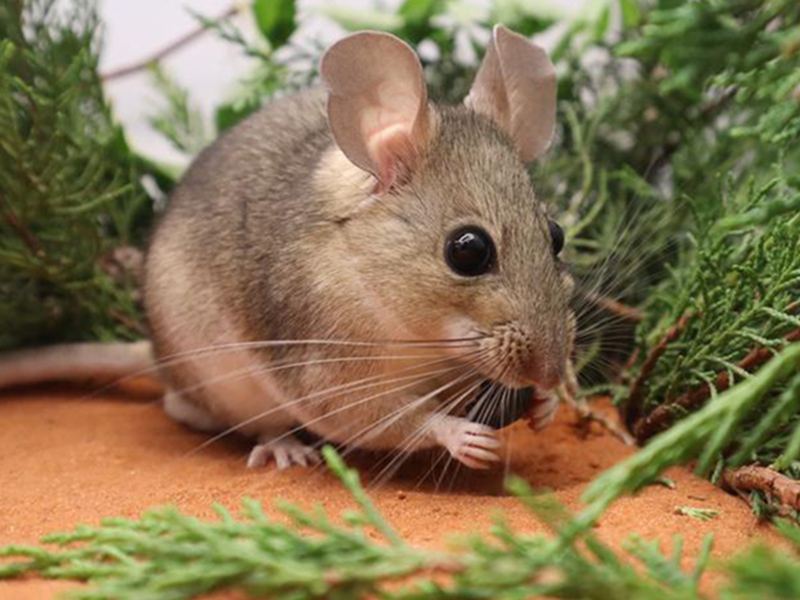Picky Eaters Endure
October 10, 2025

It’s not easy eating green. Most plants are heavily defended with chemicals to deter plant eaters. For these herbivores, getting enough to eat, while minimizing exposure to toxins, is a persistent challenge that shapes their foraging choices.
Understanding how these animals navigate these choices is fundamental to understanding what these creatures need to survive and how species respond to changing conditions, according to a new study published by Museum mammalogist Dr. Mike Cove and colleagues.
Abundant throughout the United States, woodrats (genus Neotoma) consume a wide variety of plants. “Woodrats are remarkable in their ability to eat truly awful, toxic plants,” says Utah State University ecologist and lead author Sara Weinstein. “If there are no other options, woodrats can consume plants like creosote bush, mesquite and juniper, which are full of disagreeable compounds like alkaloids and terpenes.”
Observing how woodrats choose foods at an individual level, as well as at the population level, Weinstein says, reveals how the animals are balancing the challenges of finding enough to eat without poisoning themselves.
The animals’ small size also makes them easy-to-manage research subjects. “Compared to large herbivores like deer, moose or elephants, woodrats are much easier to capture and handle,” she says. “They also readily provide us with material for diet analyses, because they tend to defecate in traps.”
These droppings provide a treasure trove of information. “Each sample combines about a day of food choices,” Weinstein says. Thanks to advancements with DNA metabarcoding, facilitated by next-generation sequencing over the past decade, it’s easy to identify everything the animal has eaten.
This information is critical for understanding species’ resilience. “A longstanding notion is that if you’re highly specific in what you eat – you only eat one thing – then, if you lose access to that plant you’re going to be in trouble,” she says. But if you’re a generalist and able to pivot quickly to an alternative food source, your chances of survival improve.
“Most woodrat populations are generalists, but at the individual level, these generalists’ diets may not be as broad as we previously assumed,” Weinstein says. “We tend to think of generalists as being a jack-of-all-trades, master of none. However, it looks like most generalists are more aptly described as jacks-of-all trades, master of some.”
Individuals appear to select a consistent subset of plants, she says, which likely helps them to manage the costs and risks of consuming potentially poisonous food.
“Ultimately, these constraints on animal diets have important implications for our understanding of food webs, species interactions and which populations are more likely to persist in changing ecosystems,” Weinstein says.
For more information about our upcoming activities, conservation news and groundbreaking research, follow @NaturalSciences on Instagram and Facebook.

